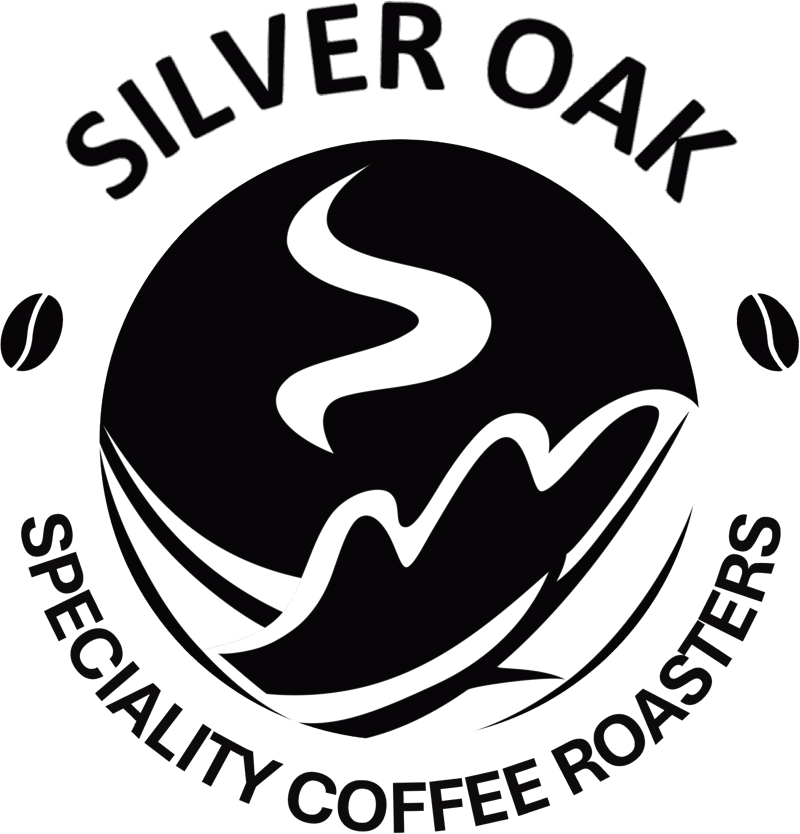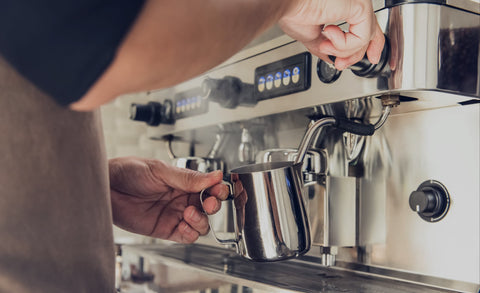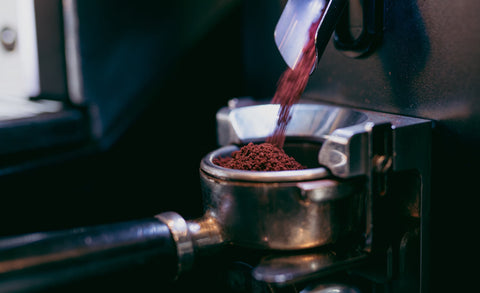Steaming milk is a crucial skill for a barista, as it is a key component in creating various espresso-based drinks like lattes, cappuccinos, and flat whites. Properly steamed milk enhances the texture, flavour, and overall presentation of these drinks. Here are the fundamentals of steaming milk as a barista:
1. Milk Quality and Temperature:
Start with fresh, cold milk. The milk's fat content affects its steaming behaviour and the resulting texture.
2. Steam Wand Preparation:
Purge the steam wand briefly before and after steaming to eliminate any residual water and ensure proper steam pressure.
3. Steam Wand Positioning:
Submerge the steam wand just below the milk's surface, creating a slight hissing sound. This positions the wand's tip slightly off-centre for optimal frothing.
4. Pitcher Positioning:
Angle the milk pitcher slightly to create a swirling motion. This promotes even heat distribution and consistent micro foam formation.
5. Texturing the Milk:
Start by introducing steam into the milk, which will create a gentle hissing or "hushing" sound. If the sound is more of a “spluttering” then sink the wand slightly further under the surface. This stretches the milk and incorporates air to create froth.
As the milk volume increases due to aeration, lower the pitcher to keep the steam wand tip just below the surface, preventing large bubbles from forming.
6. Micro foam Creation:
Aim for a velvety micro foam with tiny, evenly distributed bubbles. The texture should be creamy and glossy, not overly frothy or bubbly.
7. Monitoring Temperature:
Continuously monitor the milk's temperature with your hand. For most drinks, aim for milk around 150-155°F (65-68°C) for optimal flavour and texture. When starting out, take note of the sensation on your hand, and regularly check the temperature with a thermometer after steaming.
8. Visual and Auditory Cues:
Watch for changes in the milk's appearance. Micro foam should be glossy, smooth, and well-integrated with the milk.
Listen for the sound changes: the hissing sound of steam initially introducing air, followed by a quiet, smooth "whirling" sound as the foam forms.
9. Striking the Right Balance:
Achieving the right balance between steamed milk and micro foam is essential. For lattes, you'll want more steamed milk; for cappuccinos, more foam.
10. Pouring Techniques:
Use a gentle, controlled pour to integrate the micro foam with the espresso shots. For latte art, precise pouring techniques are required.
11. Practice and Experimentation:
Steaming milk is a skill that requires practice. Experiment with different milk types, steam wand angles, and techniques to find what works best for you.
12. Hygiene and Cleanup:
Clean and purge the steam wand after each use to prevent milk buildup and ensure sanitary conditions.
Mastering the art of steaming milk takes time and practice, but it's an essential skill for creating consistently delicious and visually appealing espresso-based beverages.



